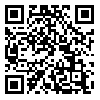BibTeX | RIS | EndNote | Medlars | ProCite | Reference Manager | RefWorks
Send citation to:
URL: http://ijaup.iust.ac.ir/article-1-378-en.html
2- Department of Industrial Design, School of Architecture and Environmental Design, University of Science & Technology, Tehran, Iran ,
3- Department of Industrial Design, School of Architecture and Environmental Design, University of Science & Technology, Tehran, Iran
This paper is based on the research which was conducted earlier on Kansei Engineering (KE) and resulted in a new concept for scissors to redesign it with another method called “User Centered Design” (UCD). This is a shift from translation of the consumers’ psychological feeling about a product related to their perception of the design (KE) to focus on designing for and involving users in the design process (UCD). According to UCD process, after understanding and specifying the context of use, specifying the requirements and evaluation of KE concept were simultaneously (by 52 users, 30 female and 22 male), next steps were producing design solutions and evaluating those solutions about requirements (by 41 subjects, 26 female and 15 male). Specifying the requirements and evaluations were by usability test via focus groups and interviews. The final concept obtained high available satisfaction rates defined in the research project. In addition, some comfort design factors for hand tools (e.g. reducing wrist bent while working and reduction of hand pain) were measured and the new designed product achieved a highly satisfactory result. At last a comparison between UCD and KE had been done.This paper is based on the research which was conducted earlier on Kansei Engineering and resulted in a new concept for scissors to redesign it with another method called “User Centered Design” (UCD). Kansei Engineering (KE) as a kind of human ergonomic technology refers to the translation of the consumers’ psychological feeling about a product related to their perception of the design. UCD is a general term for a method which focuses on designing for and involving users in the design process. It can effectively be substituted with those methods only covering the surface requirements of users. UCD includes iterative design and evaluation through gathering the user requirements and understanding the context of use. The collected and produced data yielded some new ideas as well while being eventually evaluated by end-users. The final concept obtained high available satisfaction rates defined in the research project. In addition, some comfort design factors for hand tools (e.g. reducing wrist bent while working and reduction of hand pain) were measured and the new designed product achieved a highly satisfactory result.

- KE process based on common available products that had been designed and used before, and the UCD process not necessarily needs available products or concepts.
- In KE, designers or researchers one time only meet end users and collect their perceptions, but in the most parts of UCD users are present.
- In this research continuation of KE to UCD helped designers and researchers to connect with end users more and more and maybe that high satisfactory could be the result of this connection.
- In KE, researcher use a semantic differential based form to achieve user’s feelings but in UCD with some interviews, users use non-technical words to describe what they need or want. So it seems that KE findings are more valid.
- KE can be a kind of UCD but just with focus on perceptions and feelings when UCD focuses on needs and requirements.
| Rights and permissions | |
 | This work is licensed under a Creative Commons Attribution-NonCommercial 4.0 International License. |





